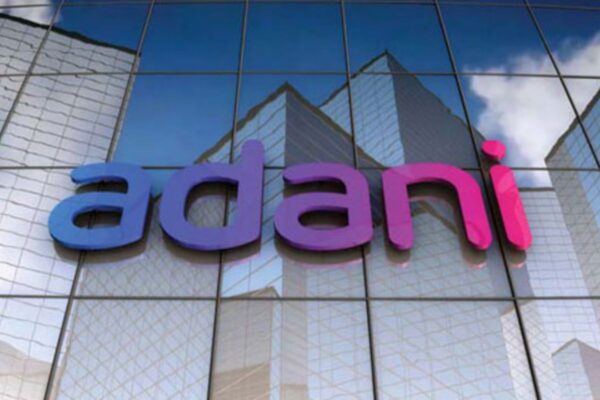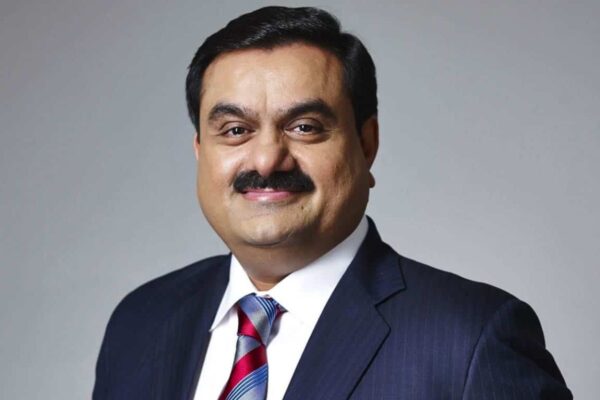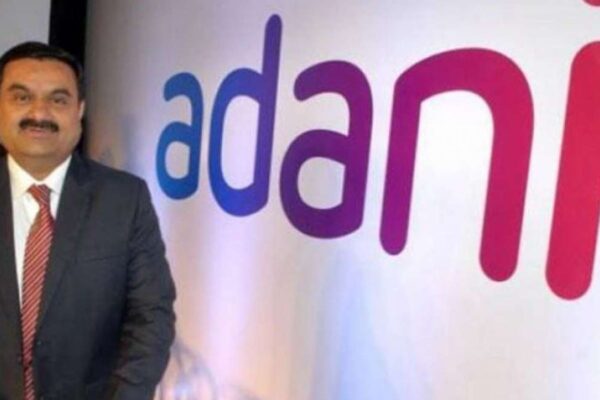Education is not mandatory to become successful: Gautam Adani was a college dropout, and now he is too powerful to fail

Education is not mandatory to become successful; Gautam Adani was a college dropout, and now he is too powerful to fail.
The phones of the journalists in New Delhi began to ring with messages on a late August evening. The group of Indian billionaire Gautam Adani has just made a hostile takeover offer for a significant broadcaster in the city.
The infrastructure tycoon is renowned for making risky and pricey purchases in a variety of industries. However, his plans to purchase New Delhi Television (NDTV) sent a shudder through Indian journalism, reigniting worries about dwindling editorial freedom in the biggest democracy in the world.
This is because NDTV, one of the few remaining big Indian networks, frequently criticizes Prime Minister Narendra Modi and the ruling Bharatiya Janata Party. Adani, 60, is regarded as one of Modi’s closest economic allies.
Investors’ responses were significantly more positive. In the days that followed the news, NDTV’s stock increased by more than 50%.
Since the beginning of the pandemic, markets have been supporting the businessman and his rapid speed of expansion. They are placing their faith in the self-made industrialist’s capacity to expand his operations in the industries that Modi has designated as development priorities.
According to Tim Buckley, director of Sydney-based think tank Climate Energy Finance, “Where Adani has been shrewd is that he has connected his business objectives with the interests of India and the interests of the prime minister of India.”
Shares of Adani’s seven publicly traded firms have increased between 10% and 260% since the beginning of the year, with the majority of them roughly doubling in value over the past nine months, according to Refinitiv data. These companies operate in industries ranging from ports to power plants.

In September, he briefly overtook Amazon founder Jeff Bezos to become the second-richest man in the world, according to the Bloomberg Billionaires Index. Since white tech entrepreneurs had long dominated the list, it was the first time someone from Asia had achieved such high rankings.
James Crabtree, executive director of the International Institute for Strategic Studies in Asia and the author of The Billionaire Raj, a book about India’s wealthy, stated that Adani’s formula for success combines great project execution with an extreme tolerance for risk-taking and high debt levels.
It’s incredible how quickly the millionaire rose to the top of the super-rich ladder. In 2020, when the pandemic first appeared, Adani’s fortune was pegged at roughly $13 billion. He now has a $125 billion net worth after two years.
He formed the enormous Adani Group more than 30 years ago, which is where a large portion of his wealth is invested. The conglomerate, with an estimated value of $220 billion, has built operations in a variety of sectors, from mining to logistics, all of which have prospered recently. And Adani has no intention of slowing down. It has begun an astounding expansion blitzkrieg, entering a variety of industries, including media, data centres, airports, and cement.
His wealth-building record is amazing and unusual, even in India, where the number of the super-rich has increased significantly, Crabtree told CNN Business.
But there’s a major risk associated with this increase.
The $30 billion borrowing binge that Adani used to fuel his juggernaut has made his company one of the most indebted in the nation. Particularly at a time when interest rates are rising globally, analysts are concerned. Since May, India’s benchmark interest rate has hiked four times, reaching 5.9%.
There are further issues: Critics claim that crony capitalism played a significant role in his development, and they wonder if his empire will remain intact if the government in New Delhi changes.
A tycoon who avoids the media did not agree to an interview.
Accelerated growth of Adani

Adani, a college dropout, has occasionally been compared to corporate moguls from America’s Gilded Age who established enormous monopoly corporations in the 1800s, such as John D. Rockefeller and Cornelius Vanderbilt.
Adani, a first-generation businessman, started out trading diamonds before establishing a commodity trading company in 1988. This company then changed its name to Adani Enterprises Limited (AEL).
Soon after, India started making ground-breaking changes that accelerated its economic growth, and Adani’s riches increased along with it. The first of his businesses to debut on the Mumbai stock exchange was AEL in 1994.
A year later, Adani began running the Mundra Port in Gujarat, where both the industrialist and Modi were born and raised in western India. The nation’s largest commercial port by volume, Mundra Port, is frequently referred to as the group’s “crown jewel.”
AEL serves as a business incubator for Adani. When they are fully developed, they are spun out, frequently by way of a public market listing. Numerous Adani enterprises have become dominant figures in their respective industries.
He is the owner of India’s biggest private thermal power generator and operator of private ports. In addition to being one of the biggest coal mine developers and owners in India, he also runs the contentious Carmichael Coal Mine in Australia, which has drawn vehement criticism from environmentalists who claim it will “death sentence” the Great Barrier Reef.
Adani has elevated itself to the top in key industries through wise investments. Adani became the nation’s second-largest cement manufacturer after Holcim (HCMLY) paid $6.4 billion to acquire its Indian cement division.
Despite having no prior experience in the field, he recently rose to become India’s largest airport operator by primarily acquiring airports through a government privatization program.
Although the tycoon’s empire is based on fossil fuels, he is also investing enormous sums of money in clean energy, an aim that is consistent with India’s long-term climate aspirations.
The billionaire, his family, and related businesses own a majority of the Adani empire’s businesses, including roughly 75% of the shares in AEL, Adani Power, and Adani Transmissions.
Additionally, he has forged alliances with significant international corporations, including leading joint ventures with TotalEnergies (TTFNF), a French energy company, and Wilmar International, a Singaporean agribusiness organization (WLMIF).
Having followed Adani for ten years, Buckley remarked, “He buys monopoly assets and runs them incredibly well.
The tycoon’s ambitious expansion, according to some analysts, may even be hazardous.
The “House of Debt”

Concerns over Adani’s debt-financed expansion are nothing new. Adani Group was one of 10 Indian conglomerates that Credit Suisse warned were under increasing “financial stress” as a result of their borrowings in a 2015 research titled “House of Debt.”
The Adani Group has still carried on raising billions from global and Indian banks.
The gross debt of Adani Group has climbed over the previous five years from 1 trillion rupees (about $12 billion) to 2.6 trillion rupees (approximately $32 billion), according to a Credit Suisse analysis dated September.
In August, CreditSights, a research company owned by Fitch Group, released a study titled “Deeply Overleveraged” regarding Adani Group in which it voiced grave worries.
Lakshmanan R, Rohan Kapur, and Jonathan Tan, analysts, cautioned that the group ran the risk of becoming overstretched and said they continued to be “cautiously wary” of its thirst for growth.
The worst-case scenario for too ambitious debt-funded expansion plans, they continued, “may eventually spiral into a major debt trap, and possibly result in a distressed position or default of one or more group firms.”
In a 15-page study in response, Adani Group stated that over the past nine years, its companies’ “leverage ratios” “have consistently de-levered” and “remain to be healthy and are in line with the industry benchmarks in the various industries.”
Later, the analysts at CreditSights updated some of the data, but they also stated that their “views have not altered from its original analysis.”
Strong ties of Adani to the political system
Some detractors, including major Indian opposition politicians and journalists, have asserted that Adani’s closeness to Modi has aided in the latter’s stratospheric rise.
The businessman was “faithful” to Modi, according to Crabtree, who noted this in his 2018 book. The two were believed to get along well, and Crabtree even defended Modi when horrific religious riots in Gujarat in 2002 left more than 1,000 people dead, the majority of them Muslims. At the time, critics charged Modi with ignoring the murders.
Rivals also questioned Modi’s usage of Adani planes during his 2014 election campaign for prime minister. The billionaire claimed that none of the private planes was used for free in an interview with the Economic Times, denying that the arrangement was improper in any way.
Over time, the industrialist and the ruling party have both refuted any claims of favouritism.
According to some experts, Adani’s empire has grown to the point where it cannot collapse and won’t be impacted by any change in power in New Delhi.
At Climate Energy Finance, Buckley asked, “If you’re the newly-elected prime minister of India, do you want to piss on the third-richest man in the world?
India, the world’s largest economy with the quickest rate of growth, needs people like Adani, he continued.
According to Buckley, “They can access global finance at a scale that India needs to fuel… expansion of its economy.” “There is every chance that Adani spends the rest of his life erasin his legacy, like John D. Rockefeller did, now that he is the most powerful man in Asia.”
Edited by Prakriti Arora




